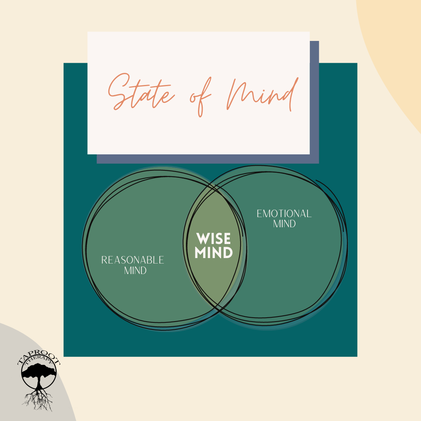|
TAPROOT BLOG: Psychoeducation for Clients and Providers
|
|
DBT provides many mindfulness tools. One of those tools is the Half Smile meditation.
The Half Smile meditation is a tool that can be soothing, silly, or comforting. It is a tool we can use to honor what we need in that moment. What is the Half Smile Meditation? The Half Smile meditation is a practice where we gently smile as we meditate. Here are the steps to practice the Half Smile meditation: 1. Sit in a comfortable position. You can sit with your legs crossed on the floor, or sitting in a chair with your feet firmly planted on the ground. 2. Start by taking slow breaths. 3. After a few breaths, and after you feel grounded into your seat, begin to smile. Do not create a full smile; rather, form a small half smile to the extent that you feel able. 4. Sit, half smiling, for as long as you wish. Why the Half Smile Meditation is helpful? Sometimes, we feel so sad that the last thing we want to do is smile. When we smile, however, we are sending a message of comfort and support to our brain. Thus, by doing a half smile rather than a full smile, we are engaging in an activity that might feel manageable when a full smile does not feel possible. Sometimes, this activity can feel a little silly. And that’s ok! If you feel silly during this exercise, it might be an indication that you want or need a good laugh. Other times, a half smile can simply soothe and comfort us. With all mindfulness activities, participate in the activity and trust where the meditation takes you. Your only job is to notice what arises as you practice. We have two ways in which we think and process: emotionally and logically. While both are important, we cannot be completely logical, nor can we be completely emotional. When we are facing a challenging decision, or trying to figure out how to respond to a situation, it is important for us to integrate both our emotional mind and our logical mind. This is the skill DBT refers to as Wise Mind. Emotion Mind
Emotion mind is the part of our mind that feels, loves, cares, gets angry, becomes passionate. Our emotions are powerful. With our emotions, we fall in love, we care for our pets, or we become activists about something we feel passionate. Our emotions guide us in reaching out to a friend we love, or caring for our family members. On the other hand, our emotions can be impulsive. We can act out in anger, only to calm down afterwards and wish we had responded differently. Our emotions are big, and when we feel them, they can be all-consuming. Logic Mind Logic mind is the part of our mind that solves problems and processes the facts of a situation. Logic mind helps us make decisions based solely on facts, leaving out all emotion. Logic mind is helpful in that it can allow us to take a non-biased stance. But, operating only from logic mind is far from optimal because it disengages us from ourselves, from our loved ones, and from our communities. We can become robotic. Wise Mind Wise Mind is the integration of these two minds. It is the optimal way in which we think and move through our worlds. Using our Wise Mind, we integrate both emotion and logic. Wise Mind is when we allow the hard hit of emotions to diminish, and we arrive at a grounded state of knowing. It’s the feeling when we know something deep in our gut to be the right thing for us to do. It is responding with both the calm, cool facts and the passion of our emotion. Experiencing Wise Mind According to Marsha Linehan, American psychologist and creator of DBT, states that we all have Wise Mind within us, we simply have to practice engaging our Wise Mind. Like any new skill, this takes practice! Here is one practice I use to engage my Wise Mind: Riding the Wave of Emotion This practice is actually its own DBT skill, but I find it helpful for engaging Wise Mind. Imagine your emotion as a wave. It gradually, or sharply, rises. It hits its peak, and then it begins its decline. All of our emotions follow this trajectory. When I attempt to engage Wise Mind, I first notice where on this wave of emotion I am. If I am at the peak, this is not the time to make moves! Rather, it’s a time to move through the emotion. When you start to feel your emotion rise, pause. Take a deep breath. Simply notice what you are feeling and thinking. Then, when you reach the peak of your emotion, repeat the practice. Finally, when you start to feel the decrease in the intensity of your emotion, notice what you are thinking and feeling. Once you feel that the intensity of your emotion has passed, your emotional wave has crashed on the shore, notice how your thoughts and feelings shifted between each of those phases. This practice helps us see how we engage our emotion mind and our logic mind, and once the intensity of the emotion mind has decreased, we can integrate the two. Listen to our podcast next week for more information on Wise Mind, as well as a guided Wise Mind practice: https://taproottherapynyc.libsyn.com/ According to Dialectical Behavior Therapy (DBT), there are six core mindfulness skills.
Understanding these skills helps us become aware of the mindfulness skills we are already using throughout our day. These skills are also helpful in making mindfulness more accessible – it makes mindfulness concrete, definitive, and behaviorally specific. 1. Observe: Simply notice what’s happening. Notice thoughts, emotional feelings, physical sensations, and anything else that is happening. Simply become aware and pay attention. 2. Describe: Put words on what you have observed. Observe and Describe often happen simultaneously. 3. Participate: fully participate in an experience. Often, when we start to practice mindfulness, we become distracted or engaged in another activity. Rather, if we fully participate, we understand the full experience and how jt might be helpful for us. Therefore, if you’re watching your favorite show on TV as a form of self-care, watch that show with your full attention. If you’re practicing a mindfulness meditation, be fully present and participate in that experience. 4. Non-judgmental stance: reduce judgments. This one is challenging, because we naturally judge things as “good” or “bad.” This skill, rather, helps us reduce judgments and focus on the facts. Thus, if you observe that you’re feeling tightness and discomfort in your chest due to anxiety, a judgmental stance would be: “I feel awful. This is embarrassing. Everyone is looking at me, and it’s just making me feel even worse.” Whereas a non-judgmental stance would be: “My chest is feeling tight, and it’s making it hard to breathe.” 5. One-Mindful: do one thing at a time. As a culture of multitaskers, this one is hard! But this is an important one to practice. If you are watching TV, then only watch TV. Don’t also play a game on your phone or scroll through Twitter. If you are eating dinner, then only eat dinner. 6. Effectiveness: do what works. If something isn’t working for you, or if something is making you feel worse, then try something else. It is OK to move on from something if it doesn’t serve you. For more on these mindfulness skills, follow along on our podcast: Taproot Therapy: A Mindful Moment. |
Categories
All
Archives
May 2024
|
|
Taproot Therapy, LCSW, PLLC [email protected] 285 Lexington Avenue Suite 2A New York, NY 10016 141 E 35th Street Suite J New York, NY 10016 |
|


 RSS Feed
RSS Feed

